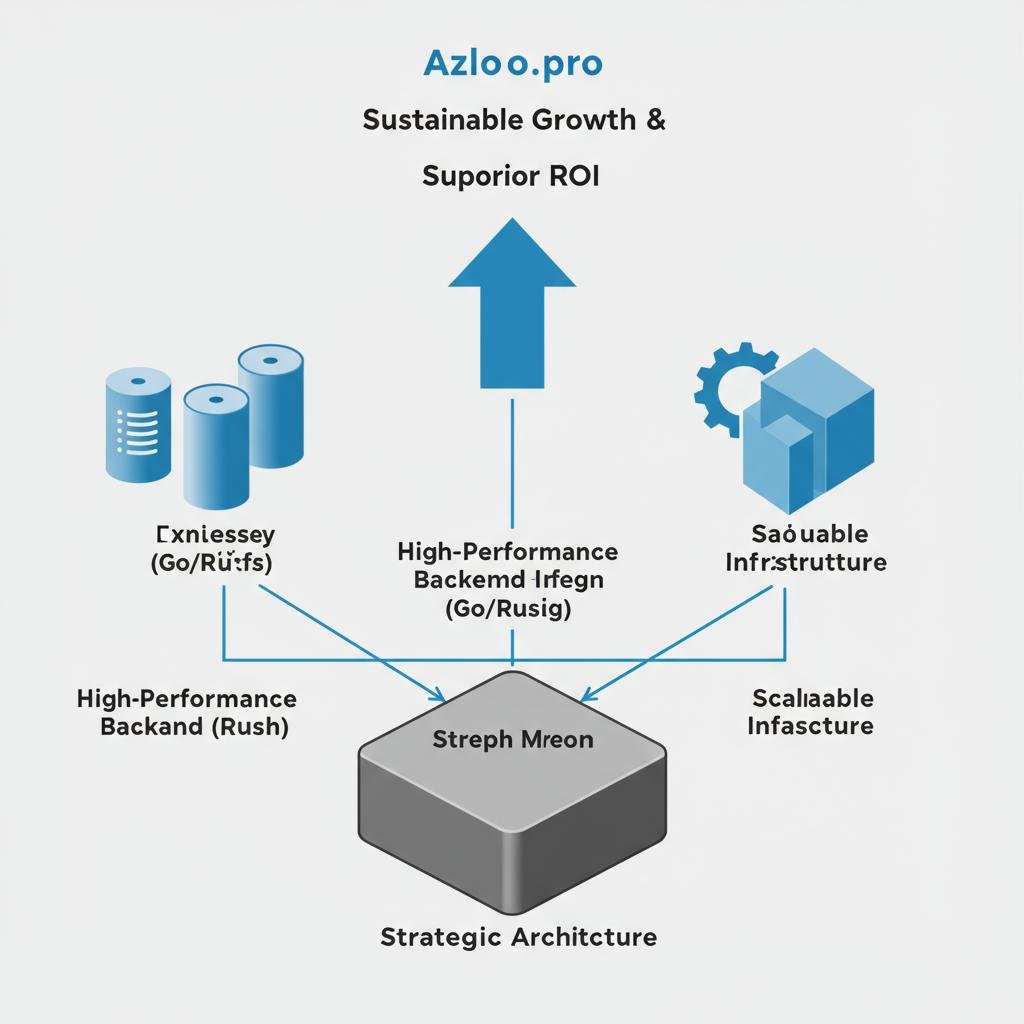The True Cost of 'Cheap' Software: Why Your Bargain Build is a Ticking Time Bomb
July 5, 2025

That low-cost software solution might seem like a smart move, but it’s often a gateway to crippling long-term expenses. This article exposes the hidden costs of cheap software—from scalability nightmares to security vulnerabilities—and makes the case for investing in robust, production-ready systems. Discover how a strategic approach using technologies like Go and Rust delivers superior ROI and prevents your software from becoming a liability.
The Siren Song of the Quick, Cheap Fix
In a world of tight budgets and aggressive timelines, the allure of cheap software is undeniable. A low-cost platform, a bargain-bin freelancer, or a no-code tool can feel like a major win, delivering a functional product without a significant upfront investment. But this initial victory is often short-lived.
Beneath the surface of that quick fix lies a mountain of ’technical debt’—a term for the implied cost of rework caused by choosing an easy, limited solution now instead of using a better approach that would take longer. This debt accumulates interest in the form of constant bugs, security holes, performance bottlenecks, and frustrated users. Eventually, the bill comes due, and the cost of firefighting, re-platforming, and managing a fragile system far exceeds the initial savings.
The Iceberg of Hidden Costs: What You Don’t See Will Hurt You
Businesses often mistake the initial price tag for the Total Cost of Ownership (TCO). The real costs emerge over the software’s lifecycle.

Hidden Cost #1: Endless Maintenance & Bug Fixes. Low-quality code is brittle. Your team’s focus shifts from innovation to constant firefighting, wasting valuable time and resources that could be spent on growth. This is a direct drain on productivity and morale.
Hidden Cost #2: Crippling Scalability Failures. A system built cheaply for 100 users will collapse under the weight of 10,000. When your business succeeds, your software fails, forcing you into a costly and disruptive emergency rewrite. In contrast, systems built with scalable technologies like Go are designed for high-concurrency and growth from day one.
Hidden Cost #3: Pervasive Security Vulnerabilities. Cutting corners on development almost always means cutting corners on security. Cheap software is a prime target for attacks, risking data breaches, devastating financial penalties, and irreversible damage to your reputation. A professional build prioritizes security at every stage.
Hidden Cost #4: Integration Gridlock. Modern businesses thrive on connected systems. Poorly built software becomes an isolated island, unable to connect with new APIs, automation tools, or critical AI services, severely limiting your operational agility.
The Domino Effect: How Poor Software Undermines Business Growth
The damage isn’t just technical; it’s strategic. A cheap software solution actively works against your core business objectives.
Impact on Customers: Slow load times, frequent downtime, and a buggy user experience lead to customer frustration and churn. You can’t build a loyal customer base on a foundation of unreliable technology.
Impact on Operations: Inefficient internal tools slow down your entire team, creating friction and wasting payroll on manual workarounds. This directly impacts your bottom line and your ability to execute.
Impact on Innovation: Your company’s ability to pivot and seize new opportunities is directly tied to your technology’s flexibility. A rigid, poorly architected system prevents you from launching new features or integrating transformative technologies, leaving you vulnerable to more agile competitors.
The Azlo.pro Philosophy: Investing in Architecture for Lasting ROI
The alternative to the ‘cheap software’ trap is not just ’expensive software’—it’s strategically-built software that serves as a long-term asset.

Principle 1: Architecture Before Code. We start by deeply understanding your business goals to design a robust, scalable, and secure architecture. This planning phase is the most critical step in avoiding the long-term costs of poor development.
Principle 2: The Right Tool for the Job. We specialize in high-performance technologies like Go and Rust because they are built for the demands of modern, production-ready applications. They provide the speed, security, and concurrency needed to ensure your software is an engine for growth, not a bottleneck.
Principle 3: Building a Foundation for the Future. A well-built system is a platform for innovation. It allows for seamless custom automation and the powerful integration of AI, turning your initial investment into a compounding source of value and competitive advantage.
The temptation to cut corners on software development is a false economy. The initial savings are quickly erased by the staggering long-term costs of maintenance, security failures, lost opportunities, and customer churn. Choosing cheap software isn’t a cost-saving measure; it’s a high-interest loan against your company’s future.
Investing in a professionally architected, production-ready system is the most financially sound decision you can make. It’s about trading a short-term ‘win’ for long-term stability, scalability, and a significantly higher return on investment.
If you’re tired of firefighting fragile systems and ready to build a truly robust system that drives growth, contact Azlo.pro to discuss your project.